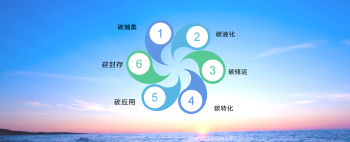免职声明:本网站为公益性网站,部分信息来自网络,如果涉及贵网站的知识产权,请及时反馈,我们承诺第一时间删除!
This website is a public welfare website, part of the information from the Internet, if it involves the intellectual property rights of your website, please timely feedback, we promise to delete the first time.
电话Tel: 19550540085: QQ号: 929496072 or 邮箱Email: Lng@vip.qq.com
摘要:核污染水排海总量超3万吨据了解,福岛第一核电站事故发生后,日本政府和东京电力公司决定在30年至40年内逐步完成核电站退役,具体工作包括处理核电站机组内的核污染水、取出并储存机组内的乏燃料、清除燃料融化形成的燃料碎片。日本政府和东京电力公司的最初目标是将..
|
核污染水排海总量超3万吨 据了解,福岛第一核电站事故发生后,日本政府和东京电力公司决定在30年至40年内逐步完成核电站退役,具体工作包括处理核电站机组内的核污染水、取出并储存机组内的乏燃料、清除燃料融化形成的燃料碎片。
根据东京电力公司计划,要将现存核污水全部排完,至少需要30年时间。但核污染水是由持续注入的燃料冷却水和不断渗入机组的雨水、地下水混合形成。也就是说机组内部的燃料碎片一日不取出,福岛第一核电站就将持续产生核污染水。 燃料清除难有进展 东京电力公司对机组内燃料的处理情况并不乐观。目前,福岛核电站1号和2号机组存有1000多块乏燃料,计划2031年取出并转移至贮存设施,较原计划推迟了10年。另一方面,1号、2号和3号机组内的核燃料碎片2021年就开始计划取出,然而,由于设备安装进展缓慢,计划今年年底在2号机组进行的试清除工作被推迟,3号机组将以怎样的手段执行清除工作也尚未敲定,核电站整体的清除工作启动遥遥无期。雪上加霜的是,据《日本经济新闻》报道,当前讨论的清除方法一次只能取出几克碎片,相当于“一挖耳勺那么大”。日本原子能学会福岛第一核电站废堆研讨委员会委员长宫野广指出:“估计燃料碎片的取出最快也要50年,长则100年。” 今年3月,日本有关机构提议使用新的燃料碎片清除方法,即向机组内灌入填充物,使内部的核燃料碎片凝固,然后从顶部挖掘取出。但这种方法从未被用于清除燃料碎片,填充物材质、注入位置和方法等细节也难以确定。东京电力公司计划用一到两年的时间来验证这种方法的可行性,而这也意味着现行的大多数工程都要被重审或推迟。先前福岛第一核电站的退役计划就已被修改五次,最长在40年内完成退役的计划正变得越来越不确定。 The total amount of contaminated nuclear water discharged into the sea exceeded 30,000 tons It is understood that after the Fukushima first nuclear power plant accident, the Japanese government and Tokyo Electric Power Company decided to gradually complete the decommissioning of nuclear power plants in 30 to 40 years, including the treatment of nuclear contaminated water in the nuclear power plant units, the removal and storage of spent fuel in the units, and the removal of fuel debris formed by fuel melting. The initial goal of the Japanese government and Tokyo Electric Power Company was to reduce the amount of contaminated water produced at the Fukushima Daiichi nuclear power plant to zero, but the damage to the plant was more severe than expected, and it was unable to prevent rain and groundwater from seeping in, so about 90 tons of contaminated water are produced every day. Between August last year and March this year, the Japanese government and the Tokyo Electric Power Company carried out four rounds of radioactive water discharge to the sea, a total of 31,200 tons. While the discharge of contaminated nuclear water into the sea has aroused international opposition, the treatment facilities have also broken down frequently. In October last year, two workers cleaning contaminated water treatment facilities were exposed to radioactive liquid when a pipe broke off. In February, another worker failed to notice that a valve on a pipe had been opened, leading to a leak of radioactive liquid at a contaminated water treatment facility. Despite TEPCO's claim that there was no external impact from the radioactive material, residents of Fukushima Prefecture expressed concern and unease in interviews with local media. According to TEPCO's plan, it will take at least 30 years to discharge all the existing nuclear water. However, nuclear contaminated water is formed by the mixture of fuel cooling water injected continuously and rainwater and groundwater infiltrated continuously into the unit. That is to say, if the fuel debris inside the unit is not removed for a day, the Fukushima First nuclear power plant will continue to produce nuclear-contaminated water. No progress on fuel removal Tokyo Electric Power Company is not optimistic about the disposal of fuel inside the unit. At present, there are more than 1,000 spent fuel stored in units 1 and 2 of the Fukushima nuclear power plant, which are scheduled to be removed and transferred to storage facilities in 2031, 10 years later than the original plan. On the other hand, the nuclear fuel debris in units 1, 2 and 3 are scheduled to be removed in 2021, however, due to the slow progress of equipment installation, the test removal work planned at the end of this year in Unit 2 has been postponed, and the means to carry out the removal work in Unit 3 has not yet been finalized, and the overall removal work of the nuclear power plant is far from being started. To add insult to injury, the removal method under discussion would only remove a few grams of debris at a time, the equivalent of "the size of an earpick," according to the Nikkei newspaper. Hiroshi Miyano, chairman of the Fukushima Daiichi Nuclear Power Plant Waste Reactor Research Committee of the Japan Atomic Energy Institute, said, It is estimated that the removal of fuel debris will take 50 years at the earliest and 100 years. In March, Japanese authorities proposed using a new method of fuel debris removal, which would fill the unit to solidify the nuclear fuel debris inside and then dig it out from the top. But this method has never been used to remove fuel debris, and details such as the material, location and method of filling are difficult to determine. Tepco plans to take one to two years to verify the feasibility of this approach, which means that most existing projects will have to be reviewed or postponed. Plans for decommissioning Fukushima Daiichi have been revised five times, and plans to complete the process in as long as 40 years are becoming increasingly uncertain. |




 日本政府和东京电力公司的最初目标是将福岛第一核电站污染水的产生量减少到零,但核电站受到的破坏比预期严重,也无法阻止雨水和地下水渗入,因此每天产生约90吨核污染水。去年8月至今年3月,日本政府和东京电力公司进行了四轮核污染水排海,总量达到31200吨。核污染水排海引起国际社会反对的同时,处理设施也故障频发。去年10月,两名进行污染水处理设施清洗作业的工人,因水管脱落而接触到放射性液体。今年2月,又有一名工人因没有注意管道上阀门被打开,导致污染水处理设施内的放射性液体泄漏。尽管东京电力公司声称放射性物质没有造成外部影响,但福岛县居民在接受当地媒体采访时表达了担忧和不安。
日本政府和东京电力公司的最初目标是将福岛第一核电站污染水的产生量减少到零,但核电站受到的破坏比预期严重,也无法阻止雨水和地下水渗入,因此每天产生约90吨核污染水。去年8月至今年3月,日本政府和东京电力公司进行了四轮核污染水排海,总量达到31200吨。核污染水排海引起国际社会反对的同时,处理设施也故障频发。去年10月,两名进行污染水处理设施清洗作业的工人,因水管脱落而接触到放射性液体。今年2月,又有一名工人因没有注意管道上阀门被打开,导致污染水处理设施内的放射性液体泄漏。尽管东京电力公司声称放射性物质没有造成外部影响,但福岛县居民在接受当地媒体采访时表达了担忧和不安。







